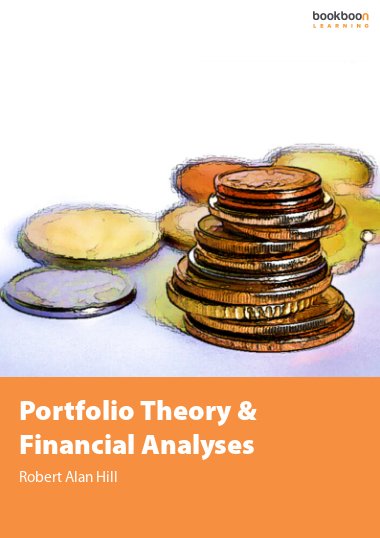This book and Exercises evaluate Modern Portfolio Theory (Markowitz, CAPM, MM and APT) for future study. From the original purpose of MPT through to asset investment by management, we learn why anybody today with the software and a reasonable financial education can model portfolios. However, one lesson from the 2007 meltdown is that computer driven models are so complex that hardly anybody understands what is going on. Returning to first principles, we learn why investors and not their computers should always interpret their results. Moreover, MPT is a guide to action and not a substitute. Investors should understand the models that underpin the computer programmes they run.

Description
Content
- Part I: An Introduction
- An Overview
- Introduction
- The Development of Finance
- Efficient Capital Markets
- The Role of Mean-Variance Efficiency
- The Background to Modern Portfolio Theory
- Summary and Conclusions
- Selected References
- Part II: The Portfolio Decision
- Risk and Portfolio Analysis
- Introduction
- Mean-Variance Analyses: Markowitz Efficiency
- The Combined Risk of Two Investments
- The Correlation between Two Investments
- Summary and Conclusions
- Selected References
- The Optimum Portfolio
- Introduction
- The Mathematics of Portfolio Risk
- Risk Minimisation and the Two-Asset Portfolio
- The Minimum Variance of a Two-Asset Portfolio
- The Multi-Asset Portfolio
- The Optimum Portfolio
- Summary and Conclusions
- Selected References
- The Market Portfolio
- Introduction
- The Market Portfolio and Tobin’s Theorem
- The CML and Quantitative Analyses
- Systematic and Unsystematic Risk
- Summary and Conclusions
- Selected References
- Part III: Models of Capital Asset Pricing
- The Beta Factor
- Introduction
- Beta, Systemic Risk and the Characteristic Line
- The Mathematical Derivation of Beta
- The Security Market Line
- Summary and Conclusions
- Selected References
- The Capital Asset Pricing Model (CAPM)
- Introduction
- The CAPM Assumptions
- The Mathematical Derivation of the CAPM
- The Relationship between the CAPM and SML
- Criticism of the CAPM
- Summary and Conclusions
- Selected References
- Capital Budgeting, Capital Structure and the CAPM
- Introduction
- Capital Budgeting and the CAPM
- The Estimation of Project Betas
- Capital Gearing and the Beta Factor
- Capital Gearing and the CAPM
- Modigliani-Miller and the CAPM
- Summary and Conclusions
- Selected References
- Part IV: Modern Portfolio Theory
- Arbitrage Pricing Theory and Beyond
- Introduction
- Portfolio Theory and the CAPM
- Arbitrage Pricing Theory (APT)
- Summary and Conclusions
- Selected References
- Appendix for Chapter 1